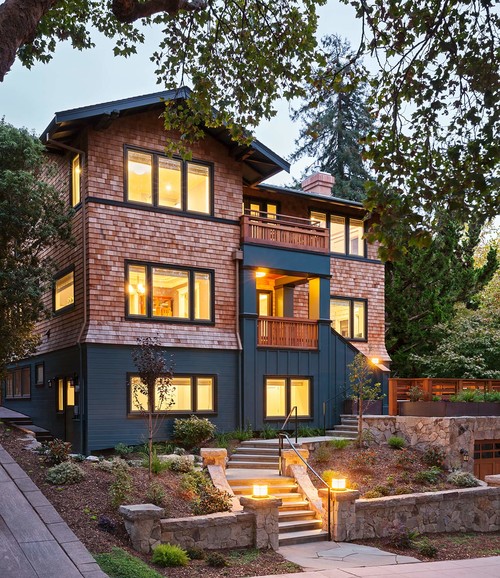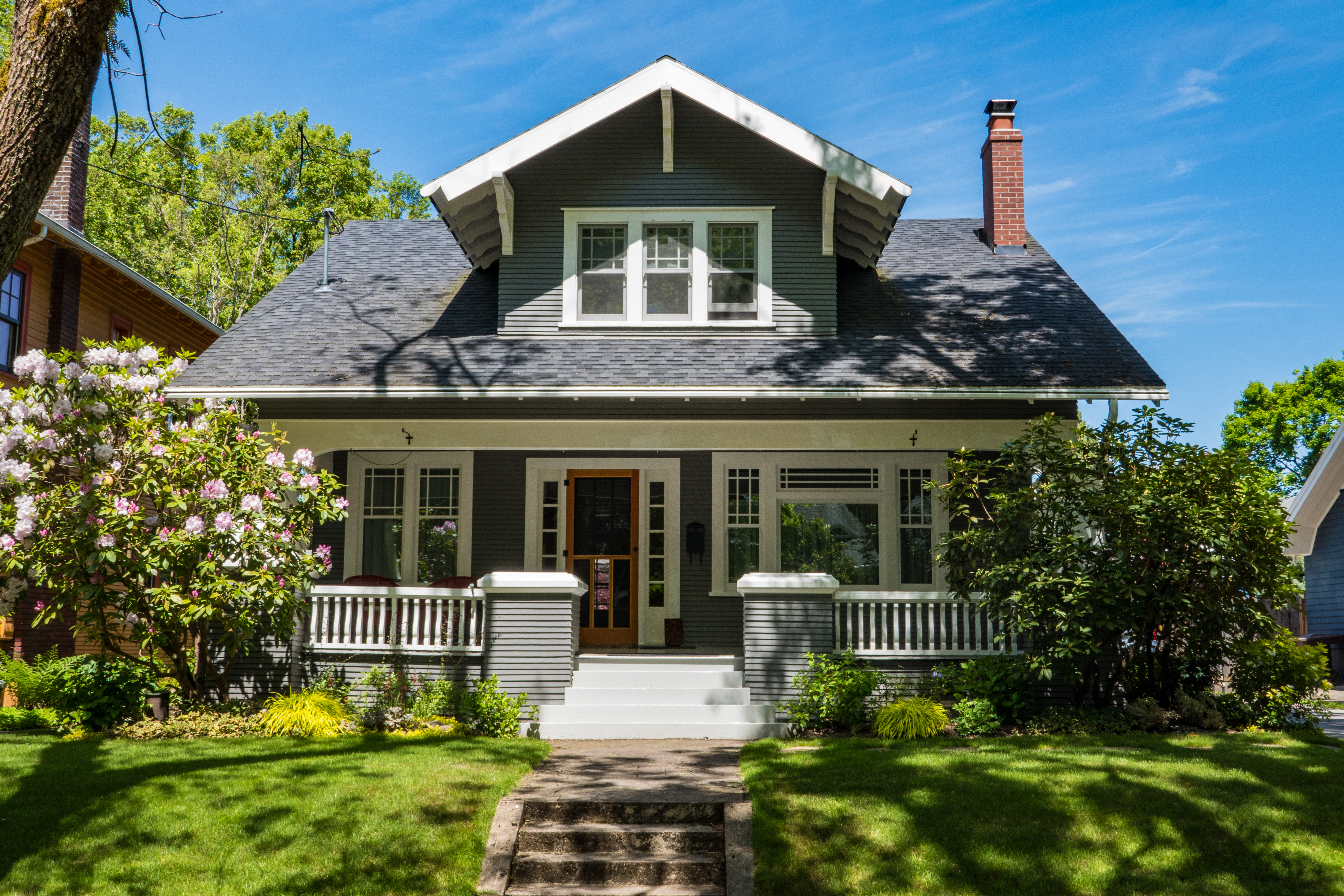Why a craftsman style house Remains Popular
Wiki Article
The Function of Arts & & Crafts Architects in Elevating Architectural Solutions in Residential Layout
Arts and Crafts architects substantially influence property layout through their commitment to craftsmanship and sustainability. They prioritize handcrafted details and natural materials, which boost both aesthetic appeals and community identity. By involving clients in the design process, these architects create distinct home that resonate with individual preferences. This approach increases inquiries concerning the future trajectory of domestic architecture and its potential effect on neighborhood dynamics. craftsman style house. What lies in advance for this classic layout ideology?
The Principles of Arts and Crafts Architecture
The significance of Arts and Crafts architecture exists in its dedication to workmanship and simplicity. This architectural motion emerged in the late 19th century as a feedback to industrialization, emphasizing the value of handcrafted details and all-natural products. The concepts of Arts and Crafts architecture prioritize functionality and harmony with the atmosphere. Frameworks commonly include low-pitched roofs, wide eaves, and exposed rafters, promoting a sense of unity with nature.Artisans played a considerable function in this style, usually integrating decorative elements like stained glass, tiles, and woodwork, which reflect local craftsmanship. The shade scheme often tends to be natural and suppressed, enabling structures to mix perfectly right into their environments. On top of that, the design motivates open layout and communal areas, fostering a sense of togetherness. Generally, the principles of Arts and Crafts architecture celebrate the beauty of simplicity and the importance of human link to both nature and area.

Lasting Practices in Residential Layout
While the need for environmentally responsible living continues to grow, sustainable methods in household layout have actually obtained significant grip amongst architects and homeowners alike. Architects are increasingly incorporating energy-efficient technologies and sustainable materials right into their designs, aiming to decrease carbon footprints and enhance energy preservation. Approaches such as easy solar layout, environment-friendly roofings, and rain harvesting systems are ending up being conventional elements of modern-day household architecture.The choice of locally sourced materials reduces transport exhausts and sustains regional economic climates. Emphasis on natural light and ventilation not just improves interior air high quality however likewise lowers dependence on man-made lights and climate control systems. These lasting techniques mirror a commitment to preserving the setting while supplying property owners with comfy, effective living rooms. As understanding of ecological issues expands, the assimilation of sustainability in property style is poised to come to be a specifying characteristic of contemporary architecture, led by the principles developed by Arts and Crafts architects.
Customization and Personalization in Home Layout
Customization and personalization in home style have actually become crucial trends in reaction to the growing wish for one-of-a-kind living environments that show specific tastes and way of lives. Home owners increasingly seek to tailor areas that reverberate with click their individualities, resulting in a much more purposeful link with their space. craftsman style house. This movement motivates architects to involve customers in the layout procedure, cultivating collaboration that guarantees the final result symbolizes the house owner's visionComponents such as bespoke formats, personalized products, and customized coatings allow for a diverse range of expressions in residential design. Arts and Crafts architects play a critical role in this evolution, emphasizing craftsmanship and quality. Their concentrate on integrating imaginative components with performance guarantees that each home is not only visually pleasing but also uniquely suited to the inhabitants' demands. Subsequently, this focus link on personalization improves the overall residential experience, producing areas that are both personal and long-lasting.

The Impact of Arts and Crafts Architects on Neighborhood Aesthetics
As communities develop, the influence of Arts and Crafts architects significantly shapes their aesthetic landscape. By emphasizing handcrafted details, natural products, and traditional construction strategies, these architects develop homes that reverberate with their environments. Their styles commonly include regional plants, structures, and colors, fostering a feeling of consistency in between developed atmospheres and nature.The Arts and Crafts activity promotes community identification via building continuity. By urging home owners to embrace similar design concepts, communities develop a natural personality that enhances aesthetic charm. This architectural harmony not just enriches the visual experience however also infuses a feeling of pride amongst locals.
The emphasis on sustainability and craftsmanship in Arts and Crafts architecture straightens with contemporary values, making these styles relevant in modern settings. Eventually, Arts and Crafts architects contribute significantly to the overall elegance and cultural honesty of communities, leaving a long-term effect on their visual tradition.

Future Fads in Arts and Crafts Architecture
With an increasing emphasis on sustainability and customization, future fads in Arts and Crafts architecture are poised to blend typical craftsmanship with contemporary advancement - craftsman style house. Architects are most likely to prioritize green products, utilizing recovered timber and all-natural rock to boost the sustainability of domestic styles. The combination of clever home modern technology will come to be commonplace, enabling individualized living experiences without compromising aesthetic honestyMoreover, the revival of artisanal techniques will promote a renewed recognition for handmade components, such as bespoke kitchen cabinetry and customized floor tile work. Future layouts may also show a focus on community-oriented areas, encouraging communication and link amongst citizens. Exterior living locations will certainly acquire prestige, perfectly incorporating nature into the home atmosphere. As Arts and Crafts architecture progresses, it will continue to honor its origins while adjusting to contemporary needs, creating unified areas that reflect individual worths and way of lives.
Often Asked Questions
What Motivated the Arts and Crafts Activity in Architecture?
The Arts and Crafts motion in architecture was inspired by a response versus industrialization, emphasizing handmade high quality, natural products, and a return to traditional workmanship, aiming to produce harmonious, useful areas that celebrated virtuosity and uniqueness.How Do Arts and Crafts Architects Collaborate With Customers?
Arts and crafts architects collaborate with customers with open discussion, prioritizing personal requirements and looks. They emphasize workmanship and sustainability, fostering a partnership that incorporates the client's vision with the engineer's know-how in style and products.What Materials Are Frequently Used in Arts and Crafts Houses?
Common products in Arts and Crafts homes consist of natural timber, stone, and block, emphasizing craftsmanship and organic looks. These elements develop a warm, inviting ambience, reflecting the motion's dedication to high quality and simpleness in design.Go Here
Exactly how Do Arts and Crafts Designs Improve Indoor Living Rooms?
Arts and Crafts designs improve interior living spaces by advertising all-natural light, open flooring strategies, and handcrafted information. These elements promote a cozy, welcoming atmosphere, motivating a link in between residents and their atmospheres with thoughtful, useful visual appeals.What Are Some Famous Instances of Arts and Crafts Architecture?
Famous examples of Arts and Crafts architecture include the Wager Residence, Greene and Greene's work of art in California, and the Robie House by Frank Lloyd Wright. These structures showcase handcrafted information and consistency with nature, specifying the activity's significance.Report this wiki page